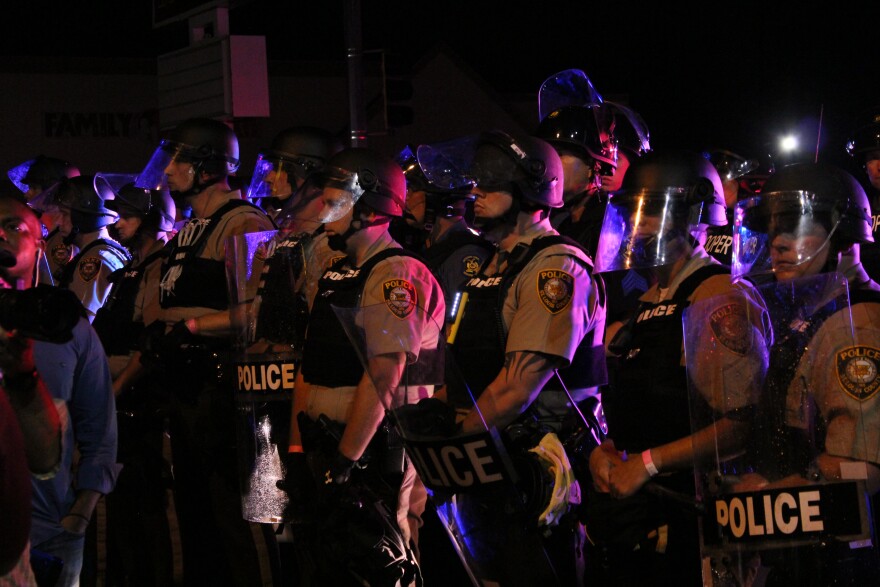Revised following conference call - The St. Louis County police department is falling short of best practices in several critical areas.
That is the conclusion of the latest report on policing post-Ferguson released Friday by the U.S. Department of Justice’s Office of Community-Oriented Policing Services. The voluntary review, requested by Chief Jon Belmar more than a year ago, found 50 areas where the department can improve, and includes 109 recommendations.
“[The St. Louis County Police] started with a very solid foundation,” said Ronald Davis, the director of the COPS office. “I think a lot of our recommendations are more about getting to best practices, and not so much compliance with basic law.”
Among the areas of concern for the Department of Justice:
- County officers receive very little training on community-oriented policing strategies. Just 14 hours of the required 196 hours of basic training are devoted to the topic, and many of the instructors are not subject-matter experts.
- The police department does not look like the community it serves, and the command staff lacks a strategy to boost minority recruitment.
- The department often uses a tactical response when de-escalation is possible, and officers who serve on tactical squads are promoted at a higher rate than those who did not.
- The department does not devote equal attention to all use-of-force cases, often performing cursory investigations when no one is injured.
“The recommendation is that all uses of deadly force are investigated the same way, regardless of injury, because the intent in the use of deadly force is to cause harm to the individual to stop their action,” said Rick Braziel, one of the experts who wrote the report for the Department of Justice.
Federal investigators were also concerned about the disparity in traffic stop data. Black motorists were stopped at a rate significantly higher than their population and were much more likely to be stopped for non-moving violations.
“I am not in a position today to say that that equates to racial profiling, except that we believe a much more in-depth assessment should be done so that the department can answer that question,” Davis said. “It almost has an obligation to answer that question, because the disparities are so significant.”
Enforcement
Unlike a pattern and practice investigation done by the Civil Rights Division, a collaborative review carries no threat of legal action. Enforcement comes from the court of public opinion, Davis said.
“By making this report public, we are letting the public know exactly where the department is at, where they should be, and how to get there,” he said. “That information allows the community to hold not only the police department accountable, but the officials over the police department accountable, including elected officials.”
Davis said the collaborative reform process in Las Vegas had made that department a model for others nationwide on reducing use-of-force incidents.
In a statement, Chief Belmar said he welcomes any outside review of his agency, and called the report a “critical analysis … borne out of an immeasurable amount of scrutiny following the death of Michael Brown and the events that followed.”
As with any critical analysis, we will evaluate the recommendations, and move forward in ways that will ensure our commitment to serve and protect the citizens of St. Louis County, while continuing to set an example of leadership for other agencies to follow.





